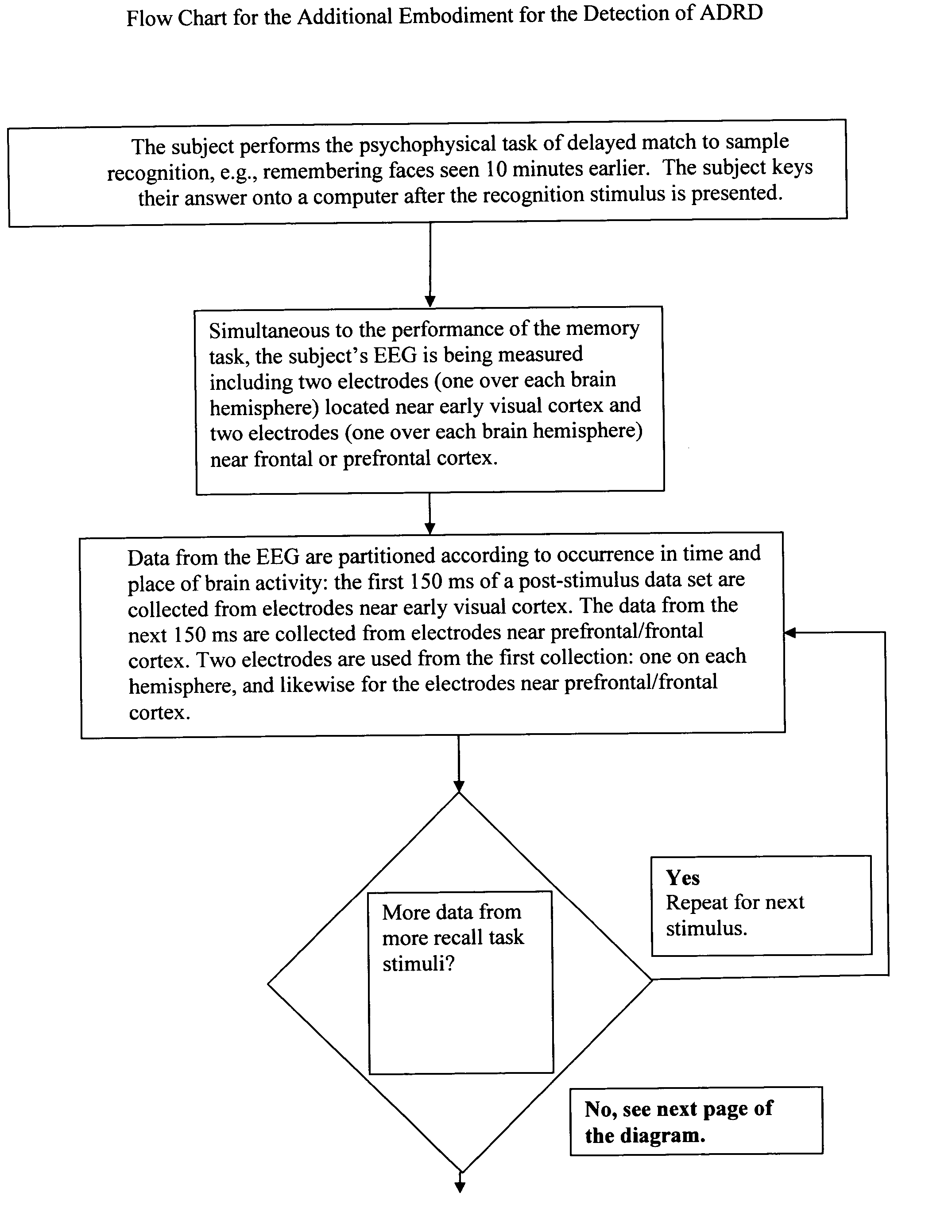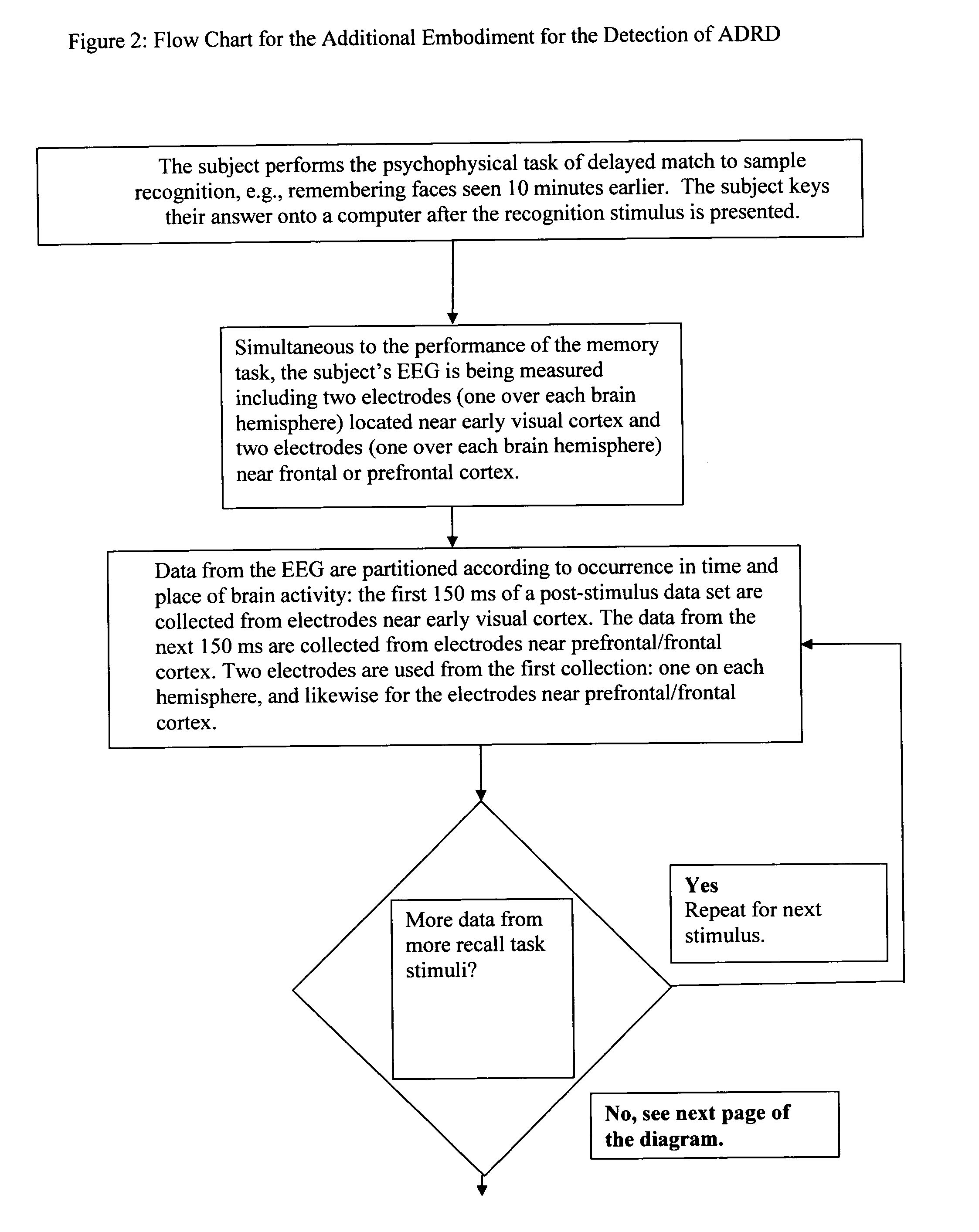Method for diagnosing, detecting, and monitoring brain function including neurological disease and disorders
- Summary
- Abstract
- Description
- Claims
- Application Information
AI Technical Summary
Benefits of technology
Problems solved by technology
Method used
Image
Examples
Embodiment Construction
[0019] This invention provides for the accurate diagnosis, detection and monitoring of a brain's state, especially for neurological diseases and disorders, with two novel methods. The first method is to use of the subject as their own baseline for comparison. The second is using a minimum of neurological data. That is, we only use data which is pertinent to the disorder which we are detecting.
[0020] For example, suppose that we wanted to check the functionality of a person's neural substrates for working memory. These neural substrates are dorsolateral prefrontal cortex (DLPFC) and the cortex along the dorsal and ventral streams prior to DLPFC. First, we would have a subject perform a specific neurological task, such as a task for working memory. Second, we would examine the neurological data which corresponds to the dorsal stream cortex, the ventral stream cortex and the DLPFC. We would only look at the data which corresponds to the activation of these cortices after the onset of ...
PUM
 Login to View More
Login to View More Abstract
Description
Claims
Application Information
 Login to View More
Login to View More - Generate Ideas
- Intellectual Property
- Life Sciences
- Materials
- Tech Scout
- Unparalleled Data Quality
- Higher Quality Content
- 60% Fewer Hallucinations
Browse by: Latest US Patents, China's latest patents, Technical Efficacy Thesaurus, Application Domain, Technology Topic, Popular Technical Reports.
© 2025 PatSnap. All rights reserved.Legal|Privacy policy|Modern Slavery Act Transparency Statement|Sitemap|About US| Contact US: help@patsnap.com



